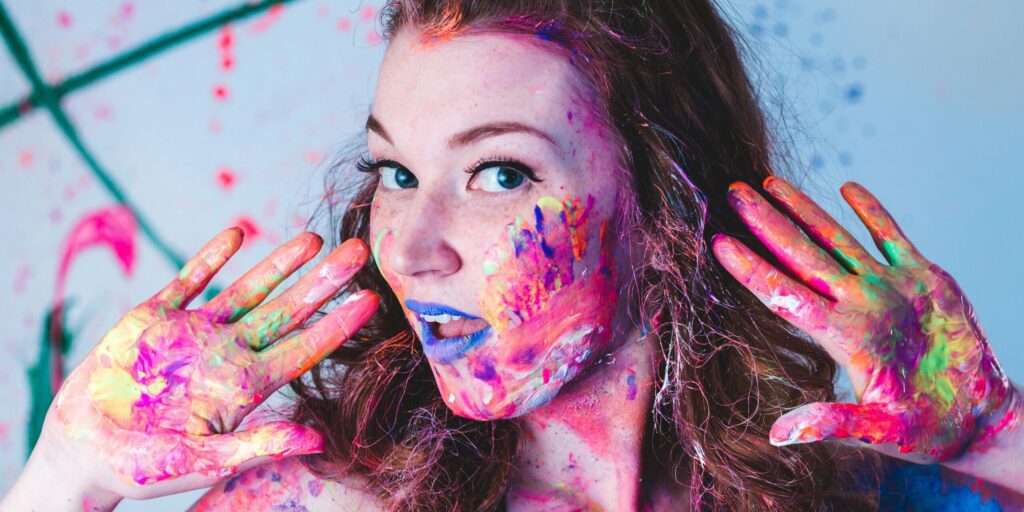On Saturday, August 2, Lollapalooza’s third day turned into a runway of its own, as fans at Grant Park in Chicago embraced festival fashion at its boldest and most imaginative. With headline performances by Rüfüs Du Sol and TWICE, the energy of the day was matched by a wave of expressive style and vibrant streetwear that lit up the festival grounds.
Neon colors and eye-catching prints dominated the scene. Fans sported fluorescent crop tops, tie-dye jumpsuits, and mesh ensembles with psychedelic florals and sharp geometric designs. Many took fashion to the next level with handcrafted outfits that showcased personal flair—ranging from repurposed denim to custom-dyed garments and glitter-enhanced accessories.
Outfit details were as diverse as the crowd itself. Platform boots in holographic or neon finishes were common, often paired with mesh socks or bold fishnets. Sheer fabrics layered over bright bralettes or metallic undergarments allowed for movement and shimmer under the stage lights. Crossbody bags, bedazzled fanny packs, and tinted sunglasses gave the ensembles a balance of function and flair.
The influence of the evening’s performers was unmistakable. With TWICE closing out the Bud Light Stage as the first female K-pop act to headline at Lollapalooza, the crowd reflected the group’s high-energy aesthetic. Many fans wore coordinated outfits inspired by K-pop choreography looks—neon pleated skirts, sequined tops, and accessories bearing the group’s logo or colors. Meanwhile, fans gearing up for Rüfüs Du Sol’s performance leaned into futuristic themes, wearing metallic pieces, LED-lit accessories, and reflective details that matched the deep, pulsing sounds of the electronic trio.
Social media buzzed throughout the day as attendees posted their festival fits using hashtags like #LollaStyle and #LollaDay3. Instagram stories and TikTok videos captured slow-motion spins, glitter applications, and candid shots of groups flaunting their coordinated outfits. Some attendees even gained viral traction for standout fashion moments that blended cultural homage, sustainability, and original design.
The vendor areas served as an extension of this creativity. Artisanal stalls offered one-of-a-kind accessories including hand-beaded jewelry, patchwork scarves, and biodegradable glitter kits. These booths allowed festival-goers to further personalize their looks while supporting independent artists and eco-friendly materials. One popular booth specialized in on-the-spot outfit customization—offering fabric paint, rhinestones, and tailoring services to upgrade basic pieces into showstoppers.
Festival fashion themes for the day included strong Y2K influences, with attendees reviving early-2000s styles such as baby tees, velour tracksuits, and tiny shoulder bags—often paired with bold platform footwear and pastel accents. Body art was everywhere, with temporary metallic tattoos, face crystals, and shimmer body oils used to dramatic effect. The creativity extended to hair as well, with fans donning dyed streaks, glitter partings, braided accents, and even LED-lit hair extensions.
Despite the creative exuberance, comfort remained a priority. Many layered breathable fabrics and chose lightweight shoes to endure the long hours of dancing and walking. Style did not sacrifice practicality, as hydration packs and sun hats were seen alongside statement pieces.
The visual energy of the festival underscored the evolving identity of Lollapalooza—not just as a music event, but as a cultural gathering where personal expression through fashion plays a central role. Day 3 in particular stood out for its fusion of sound and style, where the excitement of the performers seemed to reverberate into every outfit in the crowd.
The convergence of fashion and music at Lollapalooza continues to shape festival culture in the U.S. As seen on August 2, creativity flourishes when fans are given the space to express themselves freely, turning a day in the park into a vibrant collective showcase of individuality and inspiration.


